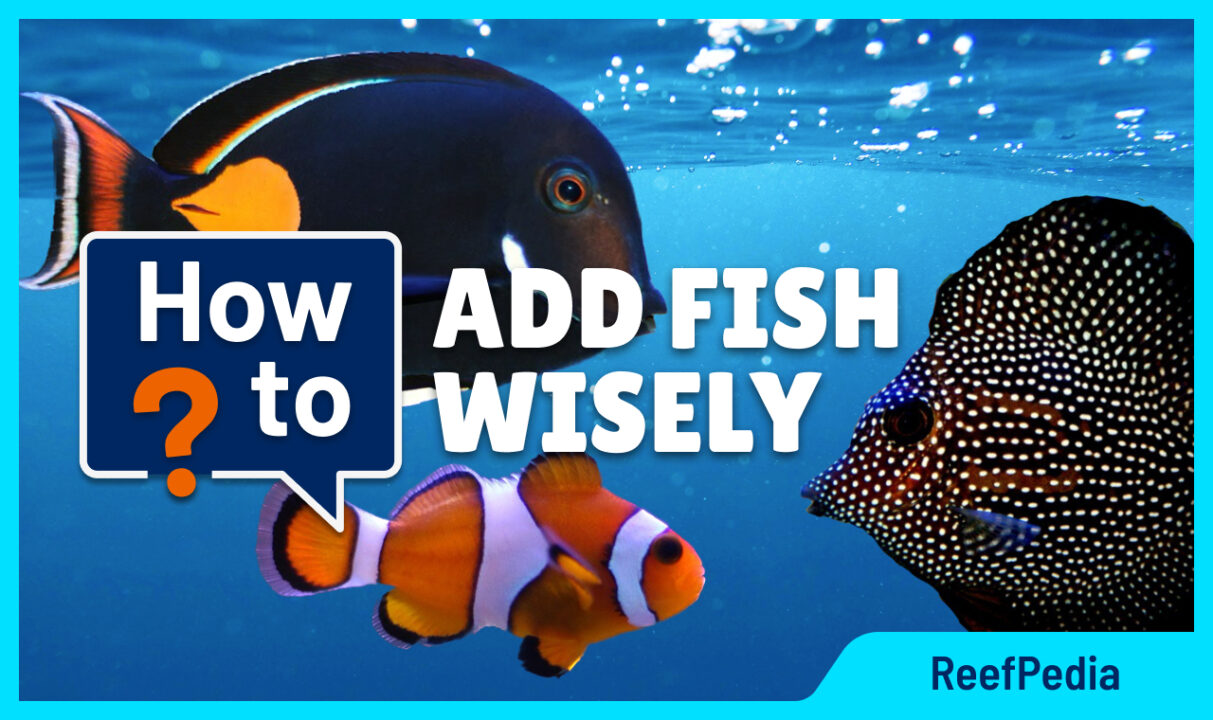How should you choose fish for a marine aquarium?
Before we decide to add a new fish to our aquarium, we should consider several important aspects. In this article, I will cover the key elements that will allow you to successfully place a new resident in your tank.
Tank size vs fish size
There are quite a few smaller fish like clownfish, Pterapogon, Chromis, Goby, etc. that will do fine in most tanks. Many of us dream of keeping Zebrasomas and, because they grow to large sizes, aquarists often decide to cooperate with their favorite LFS, when it comes to keeping these fish. It’s quite a popular practice to make a deal that when the fish grows, the store will take it back or even exchange it for a smaller one. Among Zebrasomas, the most popular and hardy one would be the yellow tang.
Diet
Before buying a given fish, you should familiarize yourself with the rules of its nutrition. Specific groups of fish, such as Zebrasomas or clownfish, feed on frozen food, while the Zebrasomas additionally require plant food. Chelmon and mandarinfish on the other hand will require a lot of worms that live on the rocks in the aquarium.
Before each purchase of fish, it’s worth speaking to specialists from your LFS to find out exactly what the fish eats and whether our aquarium is ready for it (which is very important, for example, in the case of mandarinfish mentioned above). In our ReefPedia knowledge base you will find descriptions of fish along with information on their nutrition. Before deciding to buy a fish, we encourage you to read the relevant articles on each species.
Potential difficulties
Before a new purchase, it’s important to examine the potential difficulties in keeping the fish in your aquarium. Obviously, some fish are easier to keep than others. Keeping Zebrasoma flavences will be different to keeping Acanthurus leucosternon for example. A yellow tang will cope with difficult conditions, while powder blue tangs are sensitive to changes in water purity. Paracanthurus hepatus, in turn, is a very skittish species, susceptible to stress. In the case of sensitive fish, there’s a risk that if the animal gets a disease, e.g. smallpox, it will end up infecting the whole stock. Therefore, make sure to do your research, ask in the store and decide to buy a new animal only when we’ve already gained the appropriate knowledge.
Agresja
Depending on the species, fish show different levels of aggression. Predators are an extreme example. It would be difficult to keep, for example, lionfish in a tank with smaller fish – a small clownfish can quickly turn into food for an aggressive lionfish.
However, the problem of aggression concerns not only predatory fish. When there are two male mandarinfish in one tank – they’ll also fight with each other. Different types of Zebrasomas tend to be aggressive towards each other, especially Zebrasoma xanthurum, Acanthurus sohal, but also two yellow tangs in one tank can become mutual aggressors. There’s no way to stop the Zebrasomas from fighting with each other, but it’s good practice to introduce the more aggressive fish into the marine aquarium last.
It’s pretty common that fish from the wrasses family also fight among themselves. Although, I know examples of aquariums with many wrasses that were not directly aggressive to one another, but instead chased each other intensively.
I even encountered a situation where a seemingly calm Salarias tormented other fish.
Damselfish, in turn, are considered very aggressive. They tend to pick a certain space of the aquarium and defend it fiercely. I’ve once witnessed a situation when one small Damselfish, in succession, knocked out a whole lot of Zebrasomas. Personally, I don’t think it’s worth keeping these spieces in an aquarium, but of course, each aquarist will make their own decision.
Appropriate number of fish in the tank
There are many recommendations and even calculators to help you decide how many fish you can keep in a marine aquarium. I don’t know if anyone actually sticks to these rules, but I’m sure that parameters such as PO4, NO3 and pH should be carefully monitored. If the fish stock is too large, these parameters will change quickly. We must remember that fish grow, so over time they will eat more and therefore excrete more. In this case, we will have to refine the filtration again.
Additional hints
When choosing fish, we surely need appropriate knowledge. A trusted shop, where marine aquaristics enthusiasts work, is a great place to ask and learn.
When buying, you can ask the store employees to watch them feed fish. Let’s buy lively fish that are thought to eat properly. It’s definitely a bad practice to go with the cheapest fish. In the first place, we should be buying a healthy individual that has been properly cared for and quarantined. By choosing the cheapest fish, we risk letting an animal that has not been quarantined into the tank. Therefore, a strategy based on saving money can take its revenge on us quickly.
We invite you to read more articles on specific fish species, their requirements and nutrition.
Here you will find a link to the discussion on Social Reef. Let’s talk about the introduction of new fish into the aquarium.
About the author

Marek Protasewicz
Reefkeeping has been my passion for over 10 years now. I love learning. The hobby has taught me many valuable lessons, patience being the best example.
Combining work and passion is my path. I run Crazy Coral, a marine aquarium shop, for a number of years. Building this business from the scratch I learnt from my own mistakes at a heavy cost.
Later I managed a project aimed at development of methods for quick growth of Corals in non-natural conditions. The project was carried out by Get Sales, Poland.
Presently, I am responsible for distribution strategy at Reef Factory, of which I am a
co-founder. The company produces smart devices for marine aquaristics.
The last projects I have been involved in are Social Reef and ReefPedia.



